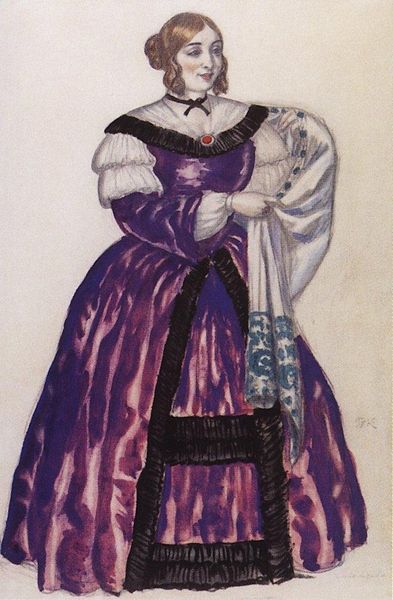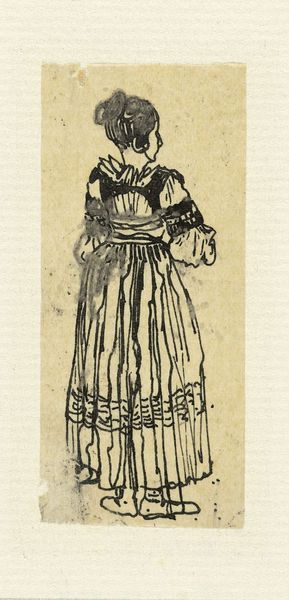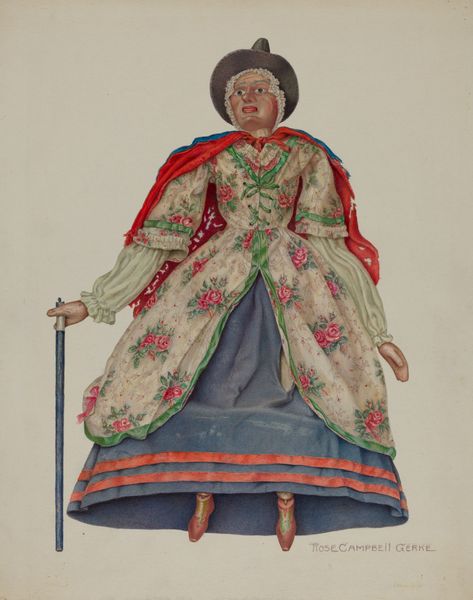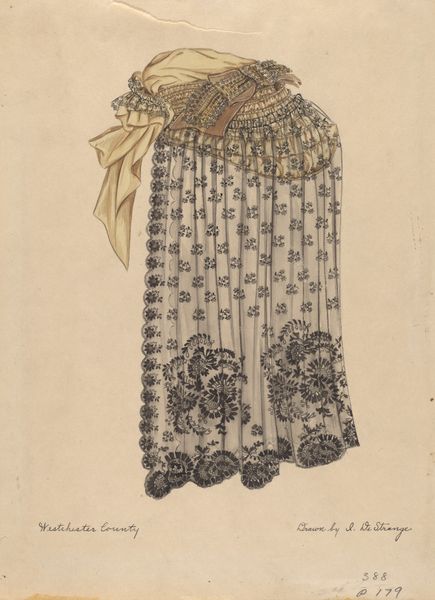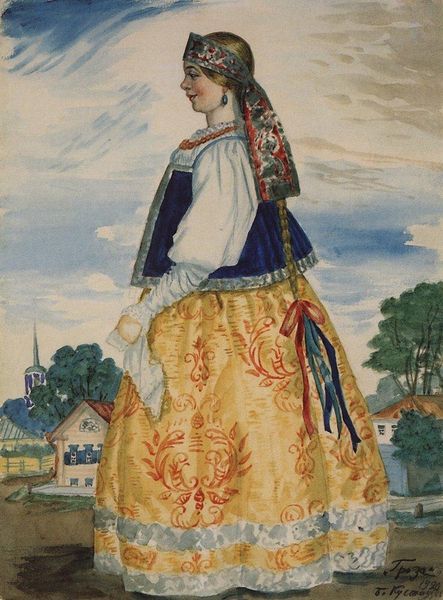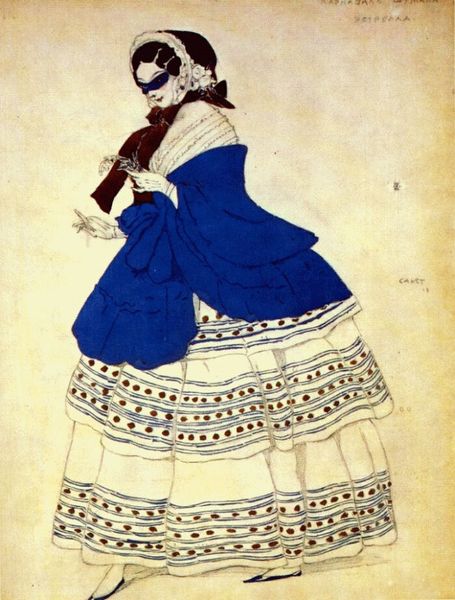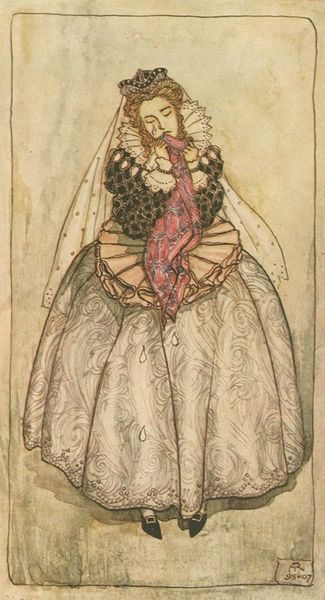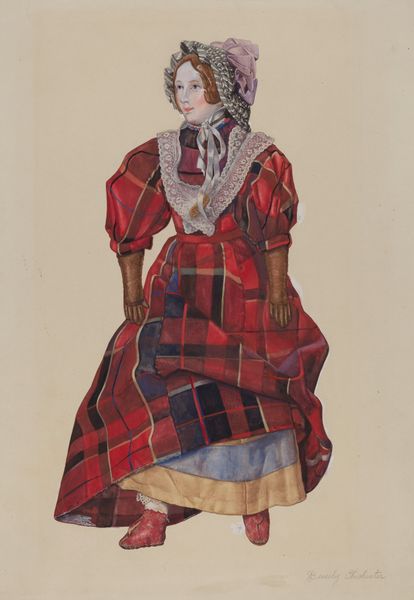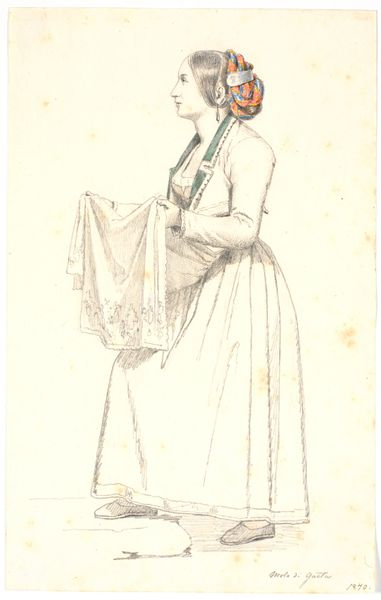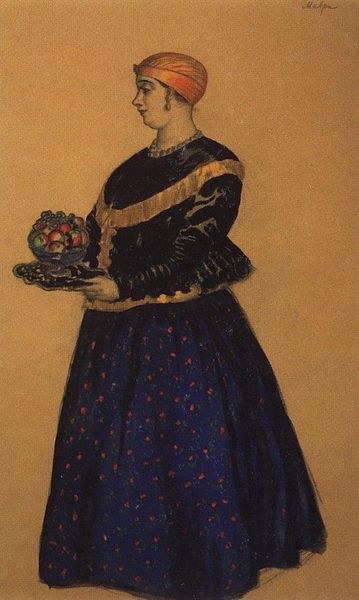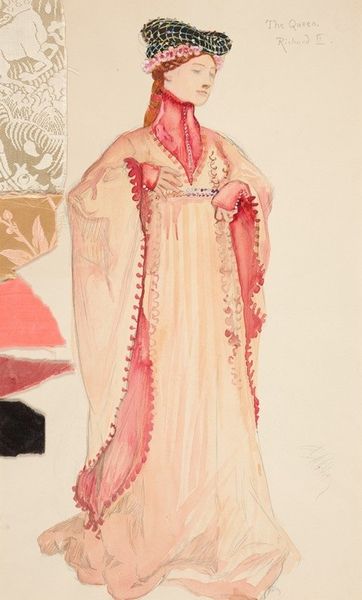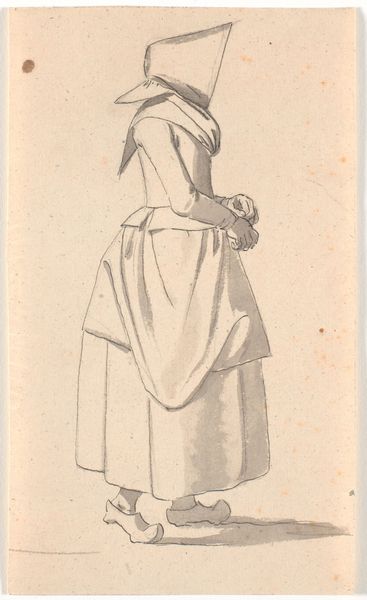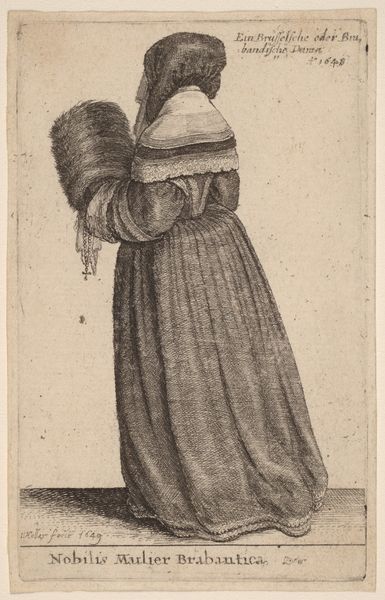
Copyright: Public domain
Curator: This delightful watercolour from 1914 is titled "Furnacheva" and was created by Boris Kustodiev. Editor: The first thing that strikes me is the material opulence, a world built of fabric and trim. It is rendered with such meticulous care, look at all the detailing, all those textures fighting for space. It seems so inherently of its time, the high romanticism... slightly performative. Curator: Performative is a key element here. Kustodiev painted a good number of portraits during his career, but many also focused on theatrical designs. This feels as though it's straddling both genres; a record of the actress Furnacheva, yes, but one acutely aware of how clothing and presentation can shape public perception, or stage persona, really. Consider the lace at the skirt's hem or the frothy sleeves—materials manufactured for a particular social context. Editor: Exactly! The handwork involved, all the construction, and the ways the painting calls our attention to those specific aspects, elevates, or even isolates them, invites me to consider all the stages of labor and consumption that it reflects. It speaks to social position, and of the many hands it took to make this portrait. How was watercolor itself considered in comparison to oils or tempera during the era? Was this 'lesser' status empowering for some reason, freeing the artist? Curator: In some circles, definitely. Watercolor's portability allowed artists more freedom to move outside the traditional studio, even though in this case the treatment feels so precise and deliberate. However, I believe the choice might be more bound up in cost. This would allow wider circulation of Kustodiev's images. Also, remember that Russia was on the brink of revolution at this time. Patronage was shifting and art was expected to be accessible. Editor: Right. Considering the imminent social upheaval, perhaps it is then also worth looking at the work's slightly old fashioned or even idealized elements – the figure almost harks back to 18th century painting styles in places. Is this a commentary on the role and presentation of women within art, or a longing for a period on the verge of vanishing? Curator: Good question. Its success rests on our shared assumptions. Kustodiev positions Furnacheva not just as an individual but also as a type – the celebrated performer, the genteel woman. Editor: So this detailed work really provides much scope for us to discuss labor, history, and persona in art. I am intrigued by its delicate appearance and strong historical themes.
Comments
No comments
Be the first to comment and join the conversation on the ultimate creative platform.
